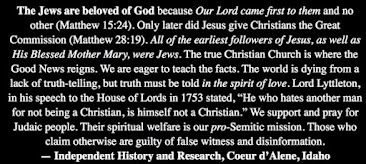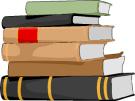"You can criticize Israel; you can criticize the war in Gaza," Foxman said. "But to compare what the Israelis are doing in defense of their citizens to what the Nazis did to the Jews is clearly anti-Semitism." -Abe Foxman, ADL Thought Cop
Professor's comparison of Israelis to Nazis stirs furor
The UC Santa Barbara sociologist, who is Jewish, sent images from the Holocaust and from Israel's Gaza offensive to students in his class. He has drawn denunciation and support.
By Duke Helfand
Controversy has erupted at UC Santa Barbara over a professor's decision to send his students an e-mail in which he compared graphic images of Jews in the Holocaust to pictures of Palestinians caught up in Israel's recent Gaza offensive.
The e-mail by tenured sociology professor William I. Robinson has triggered a campus investigation and drawn accusations of anti-Semitism from two national Jewish groups, even as many students and faculty members have voiced support for him.
The uproar began in January when Robinson sent his message -- titled "parallel images of Nazis and Israelis" -- to the 80 students in his sociology of globalization class.
The e-mail contained more than two dozen photographs of Jewish victims of the Nazis, including those of dead children, juxtaposed with nearly identical images from the Gaza Strip. It also included an article critical of Israel's treatment of the Palestinians and a note from Robinson.
"Gaza is Israel's Warsaw -- a vast concentration camp that confined and blockaded Palestinians," the professor wrote. "We are witness to a slow-motion process of genocide."
Two Jewish students dropped the class, saying they felt intimidated by the professor's message. They contacted the Simon Wiesenthal Center, which advised them to file formal complaints with the university.
In their letters, senior Rebecca Joseph and junior Tova Hausman accused Robinson of violating the campus' faculty code of conduct by disseminating personal, political material unrelated to his course.
"I was shocked," said Joseph, 22. "He overstepped his boundaries as a professor. He has his own freedom of speech, but he doesn't have the freedom to send his students his own opinion that is so strong."
Robinson, 50, who is Jewish, called the accusations and the campus investigation an attack on academic freedom. He said his former students, the Wiesenthal Center and the Anti-Defamation League had all confused his criticism of Israeli policies with anti-Semitism.
"That's like saying if I condemn the U.S. government for the invasion of Iraq, I'm anti-American," he said. "It's the most absurd, baseless argument."
Robinson said he regularly sends his students voluntary reading material about current events for the global affairs course, and that no one raised questions when he subsequently discussed his e-mail.
"The whole nature of academic freedom is to introduce students to controversial material, to provoke students to think and make students uncomfortable," said Robinson, a UC Santa Barbara professor for nine years.
As the dispute over his e-mail plays out, UC Santa Barbara has become the most recent U.S. university to confront campus unrest over issues related to the Israeli-Palestinian conflict.
In recent years, Jewish and Muslim groups have quarreled repeatedly at UC Irvine about the Holocaust and Israeli policies toward the Palestinians. Professors and students at Columbia University have also argued over issues of intimidation and academic freedom amid debates on the Mideast.
In Robinson's case, reaction has been strong -- on both sides. Shortly after hearing from the two students in January, the Wiesenthal Center produced a YouTube video titled "Jewish Students Under Siege from Professor at UC Santa Barbara." The clip shows one of Robinson's former students, her face obscured to protect her identity, reading from his e-mail.
The head of the ADL's Santa Barbara region sent Robinson a letter in February calling on him to repudiate his statements about Israel. Last month, the ADL's national director, Abraham Foxman, in a meeting with faculty members at the campus, urged the university to conduct an investigation into Robinson. He was told that an inquiry was already underway.
"You can criticize Israel; you can criticize the war in Gaza," Foxman said. "But to compare what the Israelis are doing in defense of their citizens to what the Nazis did to the Jews is clearly anti-Semitism."
Robinson's supporters say the professor is being maligned for exercising his right to challenge his students to think critically about the Israeli-Palestinian conflict. Students on campus have formed a group, the Committee to Defend Academic Freedom at UCSB, which is chronicling the saga on its website. Letters of support also have arrived from academics across the country, including one from California Scholars for Academic Freedom, which says it represents 100 professors at 20 college campuses. The group argues that the allegations have been raised against Robinson to "silence criticism of Israeli policies and practices."
Some UC Santa Barbara faculty members also are speaking up for Robinson. History professor Harold Marcuse, who attended the March meeting with the ADL's Foxman, said the pictures e-mailed by Robinson were "well within the bounds of appropriateness on campus. It's something I could have used in a course."
Marcuse, who is Jewish and teaches about the Holocaust in his world history and German history classes, said he would not have injected his own views into such a message to students, but added: "I don't think Bill Robinson's e-mail is anti-Semitic in any way. I think criticism of Israel is OK."
One UC Santa Barbara official has already looked into the allegations against Robinson, and a faculty committee is being formed to decide whether to forward the case to UC Santa Barbara Chancellor Henry Yang. A university spokesman declined to comment on the case.
Robinson has hired an attorney, and the student committee supporting him has scheduled a May 14 campus forum on the matter. Joseph and Hausman, the students who filed the original complaints, said they plan to attend. So do Hausman's parents from Los Angeles and Rabbi Aron Hier, director of campus outreach for the Wiesenthal Center.
"I just want to bring awareness," said Hausman, 20. "I want people to know that educators shouldn't be sending out something that is so disturbing."
End quote
***
Read the record of rabbinic censorship in
Judaism Discovered by Michael Hoffman
***
















